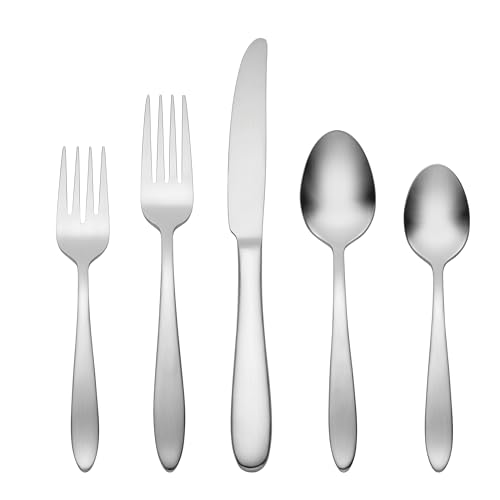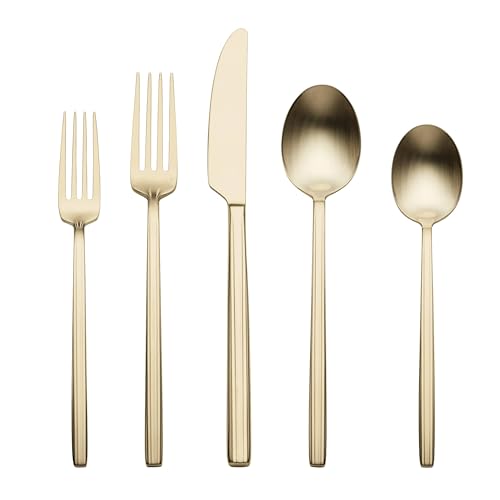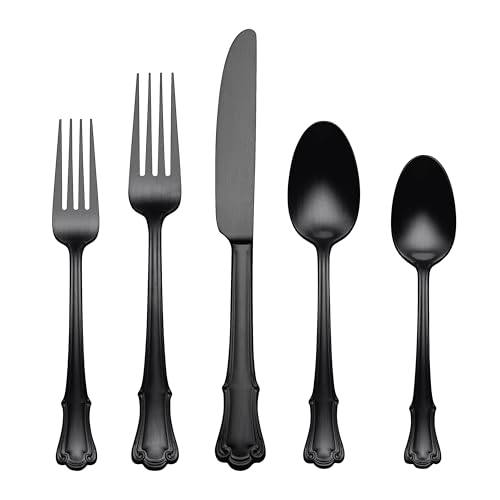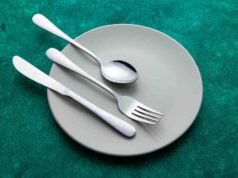In our other articles, we talked about what satin silverware is. In this one, I’m talking about cleaning your satin silverware set and using it over the long term.
The other day, I washed my satin silverware and picked it up and thought, “Is it always this dull?” I don’t know if you’ve ever gotten the same feeling. I always have felt that satin-finish flatware is lovely. To keep that soft matte sheen, a little more TLC is required.
So if you’re wondering, “How do I polish my satin silverware so it won’t turn out to be buried in scratches?” here are the methods that have worked for me (and the ones that definitely have not).
Never Use Anything Abrasive: Microfiber is Best
To begin with: forego scouring pads or abrasive sponges. Even supposedly “gentle” sponges will leave tiny scratches on satin finishes, ruining their delicacy. I myself tried using a regular sponge with a rough edge that spoon still gives me nightmares.
If you do have a microfiber cloth lying around in your household, use it to begin with. If not, a soft sponge can do.
I recommend warm water for cleaning. Warm water and a mild dish soap that does not contain citrus are the optimal combination for cleaning.
And don’t leave your silverware soaking in water for a few hours, either. I used to just leave mine sitting in the sink overnight because… things happen. But water, or even harder water, will leave you with strange white spots or tiny rust marks. Satin finishes don’t disguise those too well.
Quick Rinse = Long Life: Avoid Acidic Foods
Try to rinse your satin silverware right after use. Especially if you’ve had acidic foods like tomato sauce, vinegar, or citrus they can wear down the finish over time. Even just rinsing them under warm water and setting them aside (without touching each other!) can help.
A small but helpful hint: do not wash them with greasy pans or other metal items. They can rub against them and become cloudy or scratched.
read more: How to Sanitize Wooden Spoons Naturally
Hand Washing vs. Dishwasher: Minimal Contact
Can satin silverware be put in a dishwasher? Technically, yes. But if you want it to sparkle like new? Hand wash.
If you do use a dishwasher, avoid:
- High-heat drying cycles
- Harsh detergents (use phosphate-free or “gentle” ones instead)
- Overloading (no metal-to-metal contact!)
Sometimes, I place them in the top rack, run a no-heat cycle, and towel dry when they’re still moist yep, it’s an added step, but they really shine.
Dry Immediately: No Excuses
Letting silverware air dry may be harmless, but water spots are the satin finish’s arch-nemesis. I always have a kitchen towel nearby and throw everything with a quick buffing after washing. It makes a big difference not to mention, no annoying drip marks in your drawers. It’s not rocket science to keep satin silverware looking good, but there is some maintenance involved. Once you do it a few times, you’re an expert. And trust me, there’s something unexpectedly satisfying about having that soft glow every time you set the table. Like, “Yeah, I’ve got my life together.” Or at least, my forks are. If you’ve got a cleaning tip or two of your own (particularly non-toxic ones), feel free to share I’m always willing to try something new.w.












[…] previous article, we talked about satin silverware sets. Later, we also discussed in detail how to clean these sets. In this article, we’ve prepared a list of the most suitable and high-quality Satin Silverware […]
[…] this matte or shiny?” That’s when I realized that the “in-between” finish was most likely satin silverware and to be honest, it might just be the underrated star of modern table […]
[…] covered both premium sets and more affordable options. In this article, you can read about whether satin silverware sets are truly suitable for daily […]
[…] I never thought I’d care this much about forks and spoons… but here we are. A few days ago, I got the LIANYU 45-piece satin flatware set, and it really […]